This post contains affiliate links. When you purchase through links on our site, we may earn an affiliate commission. Read our disclosure.
To effectively manage the decluttering process and avoid feelings of overwhelm, it is advantageous to approach it in stages and focus on specific zones. It can be helpful to prioritize the areas that require attention most urgently by utilizing a decluttering checklist. Concentrating on one room or even a specific section within a room, such as kitchen cabinets, allows for a thorough completion of that area before progressing to the next space.
Continue reading for valuable methods to guide you through decluttering your home, room by room.
We have collected these declutter tips from Katherine Picott, professional home organizer, editor of thespruce.com
Benefits of Decluttering Your Home
There are several advantages to creating a clutter-free environment.
Firstly, having fewer items can simplify your cleaning and organizing routines, making them feel less daunting. Additionally, minimizing clutter can help alleviate the stress and anxiety that often accompany a messy space. It also makes locating items more efficient and quicker when needed. Furthermore, a well-organized space can enhance concentration and support staying focused on tasks at hand.
Essential Strategies for Decluttering Your Home
Use Containers to Sort Items
Before beginning the decluttering process in your home, it may be beneficial to prepare containers for the following purposes to help sort your items effectively:
- Organize: Return items that have strayed from their designated storage areas to their original locations.
- Repair: Attend to items that require minor fixes, such as sewing a button back onto a shirt, before storing them.
- Recycle: Separate materials that can be responsibly recycled.
- Dispose: Identify and dispose of items that are no longer useful or fit for use in the household trash.
- Donate: Consider donating items in good condition to charitable organizations or individuals who can benefit from them.
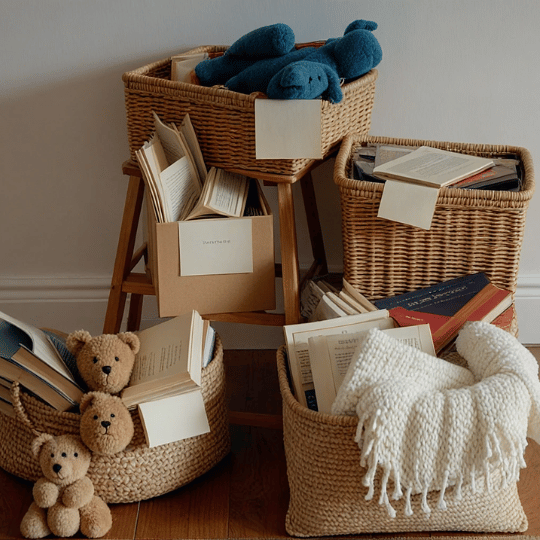
Remember These Essential Decluttering Rules!
- 12/12/12 Rule: Consider identifying 12 items that you can dispose of, 12 items that could benefit others and be donated, and 12 items that should be returned to their designated places in your home.
- 20/20 Rule: Reflect on letting go of items that can be easily replaced for $20 or less and within a timeframe of 20 minutes.
- 80/20 Rule: This principle suggests that we tend to utilize 20 percent of our belongings 80 percent of the time. It may be beneficial to either remove or store away 80 percent of the items that are not frequently used.
- Five-Second Rule: When assessing your belongings, take a moment to think back on the last time you used an item. If you’re unable to recall its use within five seconds, it could be an opportunity to consider parting with it.
- Rule of Five: This guideline, commonly referred to as the five-year rule, encourages evaluating items that have not been used in the past five years and considering their removal from your space.
Establishing an Effective Decluttering Timeline
If you don’t have a large number of belongings, you can absolutely declutter your house in just a day, over a weekend, or even within a structured 30-day plan. Set realistic and achievable goals to maintain your motivation and avoid feeling overwhelmed.
Break down the areas that need decluttering and estimate the time each will take, allowing for some buffer time in case things don’t go exactly as planned.
Begin with a cleaning session before tackling decluttering, so that your everyday items are neatly organized and out of the way. Consider beginning with a small, manageable space where you can get quick results. Completing this section swiftly will give you a sense of accomplishment and propel you forward in your overall decluttering journey. You’ve got this!
How to Declutter Your Entire Home, Room by Room
The Bathroom
Medicine Cabinet: Clear everything out and discard outdated medications, makeup, and skincare products. Return only the essentials to the cabinet, placing the items you use most frequently at eye level for easy access.
Cabinet Drawers: Empty the drawers completely and assess what to keep and what to toss. Put the items you’re keeping back in their designated spaces, prioritizing the items you use most often in the top drawers.
Shower, Tub, and Bathroom Sink: Remove everything from these areas and declutter any items that don’t belong.
Final Touch: Sort everything that lacks a proper home into the bins you’ve prepared. This will ensure everything has its place and your space remains organized!

The Bedroom
Start by making your bed. It’s difficult to feel accomplished in decluttering your bedroom with an unmade bed looming in sight.
- Nightstands: Clear off anything that doesn’t belong, and toss it into your put-away bin. This can include finished books, pens, papers, and old mail. Don’t hesitate to dispose of or recycle items you no longer need, such as empty tissue boxes, dry pens, or outdated chargers.
- Focus on the tops of your dressers, chests, and bureaus: Pay close attention to any scattered clothing. Any item that requires folding or hanging should be placed in the put-away bin. If you’re concerned about wrinkles, simply lie them on your bed for now.
- Drawers: When you tackle your drawers, pull everything out of them. Identify the items you haven’t worn and add them to your donation bin. Fold and neatly store the clothing you choose to keep.
- Desk or vanity table: At your desk or vanity table, resist the temptation to cram things back into drawers; instead, place them in your put-away bin. Discard any items or paperwork you haven’t used in the last six months.
Finally, return everything to its rightful place, and fold, hang, and store your clothing in an efficient manner. If your closet is now catching your eye, we’ll conquer that next!
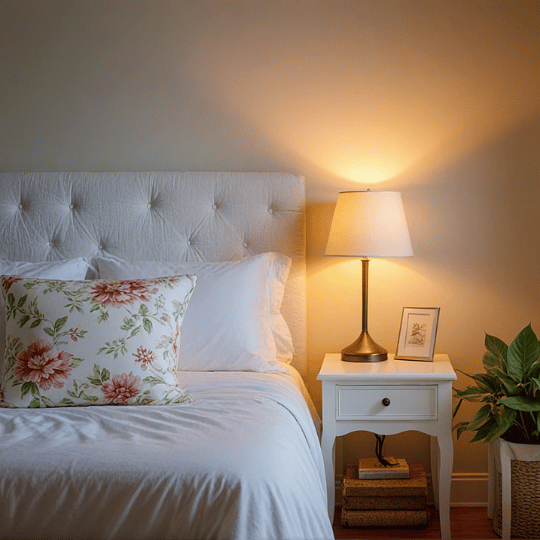
Closet and Clothing
Alright, let’s get started. It’s time to transform your closet! The most effective way to tackle this is by decluttering your clothing by category. You’ll find that it’s much simpler to determine whether to keep or toss a pair of jeans when you assess your entire jeans collection at once. So, begin by pulling out all of your clothing types and make decisive choices about what to keep and what to let go.
Once you’ve sorted through everything, you’ll have four organized piles to address:
- Organize: Return items to their correct location. For instance, if you find a pair of socks in your closet, neatly place them in your dresser.
- Launder: Gather any dirty laundry and put it in the hamper or take it directly to the laundry room.
- Repair: Set aside any clothes that need fixing—whether it’s holes, tears, or missing buttons—and take them to a tailor or dry cleaner.
- Donate: To clear out your wardrobe, take any items you no longer want to a donation center or consignment store.
You’ve got this! Taking charge of your closet will feel incredibly rewarding.
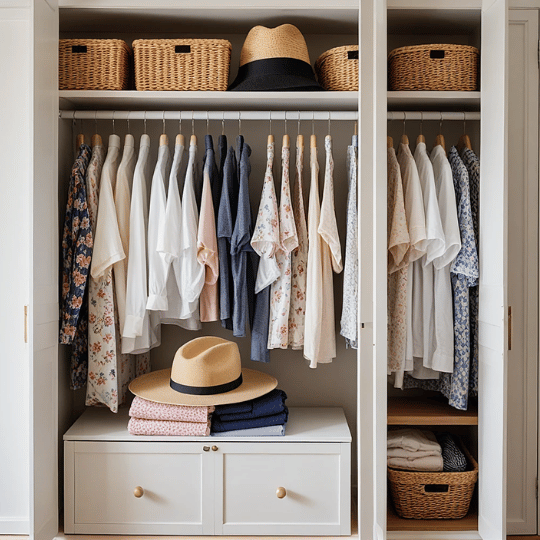
The Entryway, Mudroom, and Foyer
Regardless of whether you have a traditional mudroom or foyer, you undoubtedly have an entryway. To maximize its functionality, it’s essential to declutter it regularly.
- Start with any desk, console, or side table: Open each drawer and assess the contents decisively—decide what to discard and what to keep. Don’t forget to clear off the tops of these surfaces as well. Ensure you have designated spaces for your keys and other important items; everything should be easily accessible without feeling overcrowded. This preparation will make your morning routine effortless as you grab what you need to head out the door.
- Hall closet: When it comes to your hall closet, treat it just like any other closet. Begin by thoroughly reviewing your shoes, boots, jackets, and accessories, discarding those you no longer need.
Remember, the entryway often becomes a catch-all for items from other rooms. Make it a priority to return misplaced belongings to their designated spaces. A well-organized entry sets a positive tone for your entire home!
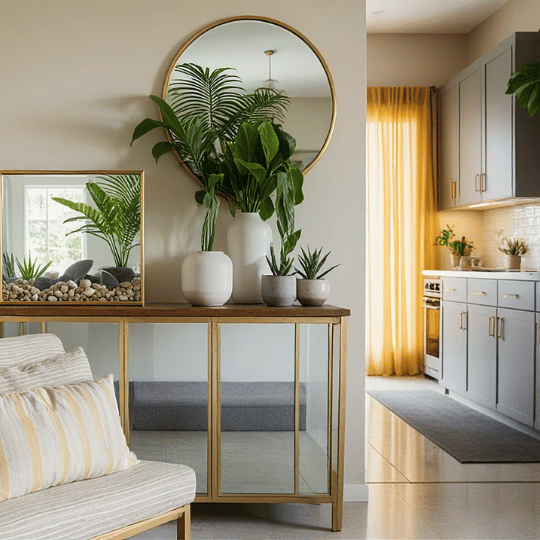
The Kitchen
Maintaining a clutter-free kitchen is entirely possible, even with the diverse activities that take place—cooking, dining, and socializing, particularly in smaller spaces. Kitchens often accumulate a variety of items, but with the right approach, you can easily manage them.
Begin by tackling your primary storage areas: empty your pantry, cabinets, and drawers. Take a moment to evaluate each item, then return everything to its proper place. Focus first on your key storage spots, starting with the pantry and upper cabinets, before moving on to the lower cabinets, drawers, and the area beneath the kitchen sink. By organizing these essential spaces, you’ll create a more efficient and inviting kitchen.

The Living Room
The living room is one of the most challenging areas in your home to keep organized on a daily basis. Given its high usage and limited storage options, it’s essential to have a solid strategy. Here’s how to master the clutter:
- Establish Permanent Storage Solutions: Designate specific areas for frequently used items, such as remote controls, magazines, and books. This keeps everything in its place.
- Regularly Declutter: Make a habit of tidying up this space to maintain a sense of order.
- Large Furniture: Start with your bookcases, consoles, and side tables. Next, tackle the coffee table and entertainment center. Clear them out, evaluate the contents, and sort items back into their designated storage spaces. Return books to their shelves, eliminate unnecessary paper clutter, and ensure remote controls are in their rightful spots.
- Electronics: Remove any devices or cables that aren’t connected to your television or home theater system. If it’s not in use or doesn’t work, it’s time to let it go. Store items like chargers and gaming equipment where you’ll actually use them.
- Toys: Inspect every toy for wear and functionality. If it doesn’t work or your kids no longer play with it, consider recycling or storing it.
Finally, grab your put-away bin and return everything that belongs in another room to its proper storage space. With this approach, your living room will stay organized and welcoming!
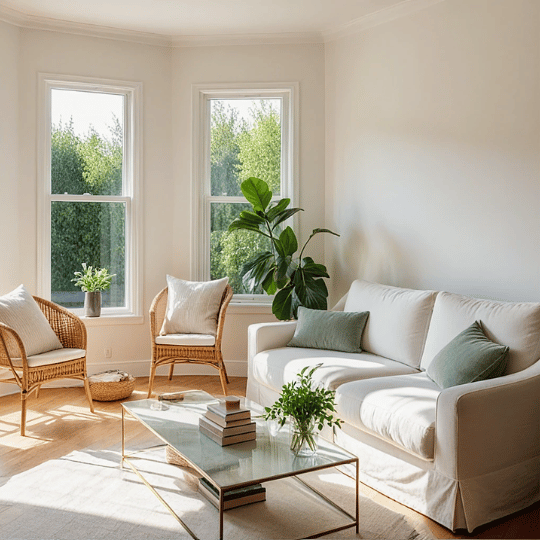
Effective Ways to Dispose of Clutter
When decluttering your home, you have excellent options for disposing of items you no longer want.
- Donate: By giving clothes and gently used items to charities and local Goodwill organizations, you not only help others in need but also effectively clear your space. If you’re planning to pass items along to friends and family, set up designated bins for each person.
- Sell: In addition to your donation bin, consider starting a collection of items to sell at a garage sale or through reputable online marketplaces. This not only reduces clutter but can also bring in some extra cash.
- Recycle: Familiarize yourself with your local recycling guidelines, especially for items like electronics, which often cannot be included in regular recycling. Keep a separate bin for these items and take them to the appropriate recycling center.
- Trash: If you’re tackling a major decluttering project, consider renting a dumpster in advance to dispose of any unusable or oversized items. This proactive step will streamline your process and keep things organized.
This post contains affiliate links. When you purchase through links on our site, we may earn an affiliate commission. Read our disclosure.

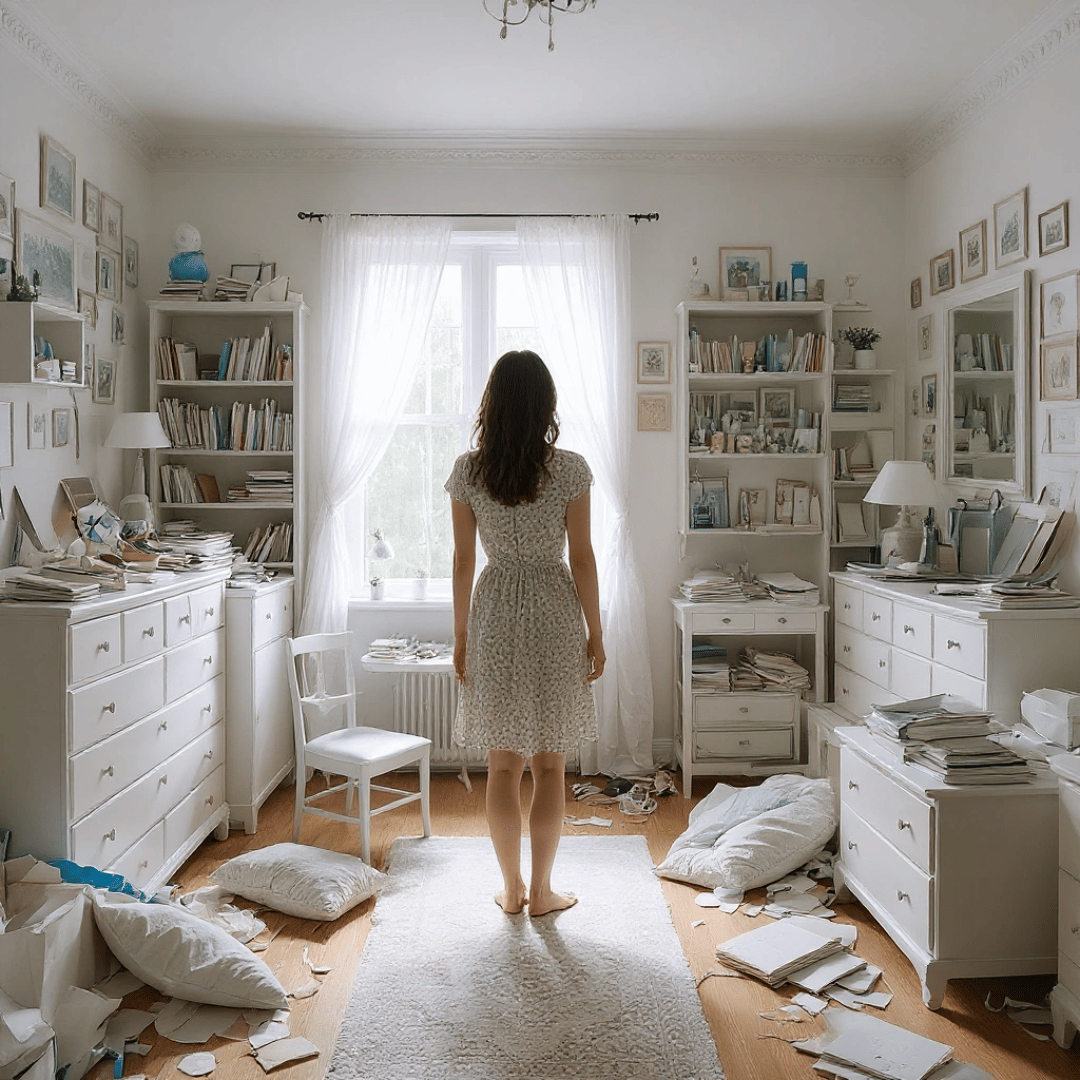
Blessings ~ I appreciate your help and patience <3 Thank you <3
I appreciate you greatly! Blessings <3